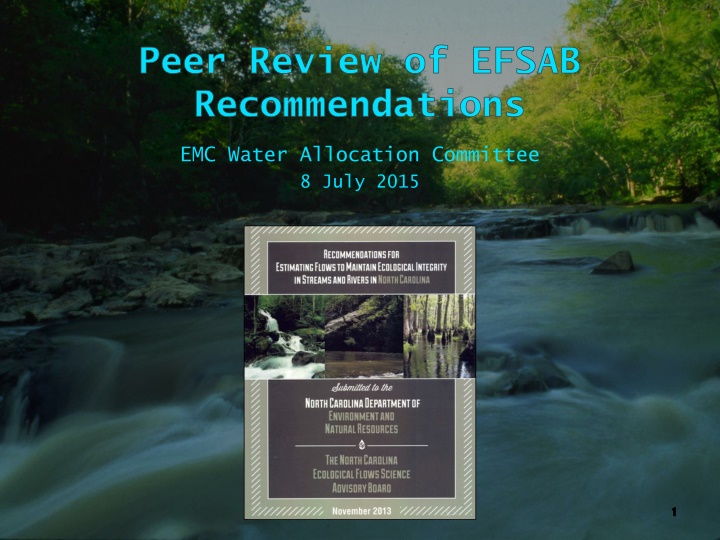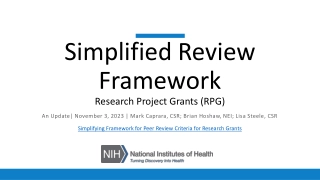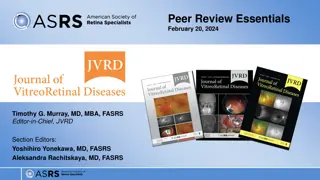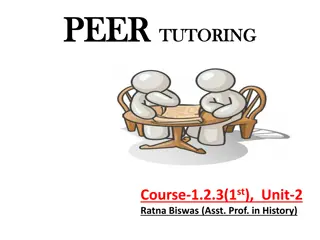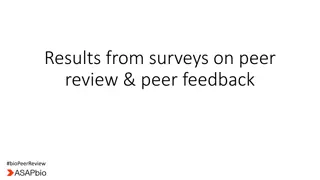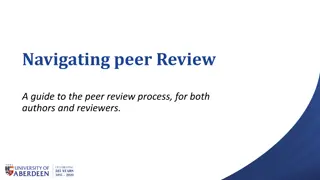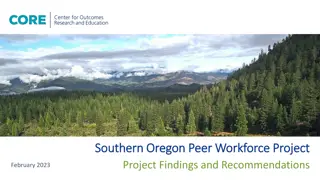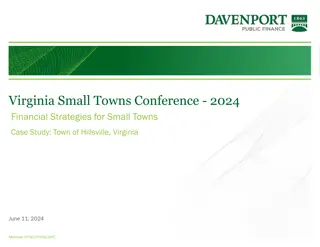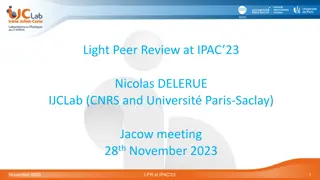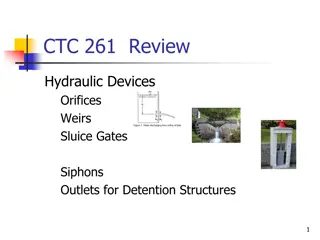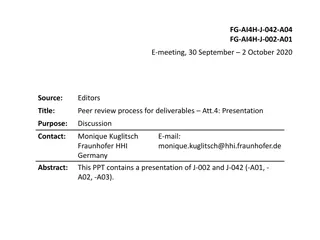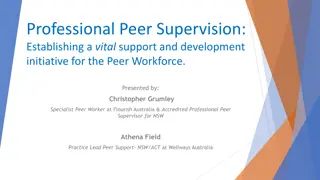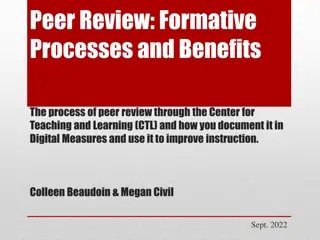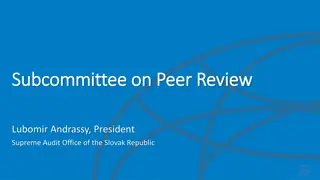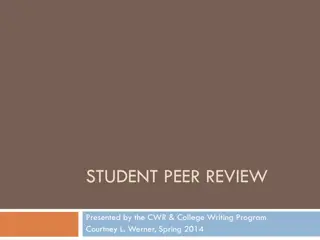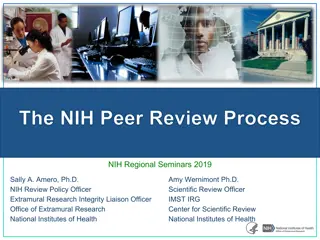Peer Review of EFSAB Recommendations by Instream Flow Council
Detailed peer review conducted by the Instream Flow Council on the Ecological Flow Science Advisory Board's recommendations for water allocation, focusing on the credibility, grounding in riverine science, key concepts, and suitability for ecological integrity in basin-wide water planning.
Download Presentation

Please find below an Image/Link to download the presentation.
The content on the website is provided AS IS for your information and personal use only. It may not be sold, licensed, or shared on other websites without obtaining consent from the author.If you encounter any issues during the download, it is possible that the publisher has removed the file from their server.
You are allowed to download the files provided on this website for personal or commercial use, subject to the condition that they are used lawfully. All files are the property of their respective owners.
The content on the website is provided AS IS for your information and personal use only. It may not be sold, licensed, or shared on other websites without obtaining consent from the author.
E N D
Presentation Transcript
Peer Review of EFSAB Recommendations EMC Water Allocation Committee 8 July 2015 1
The peer review of the Ecological Flow Science Advisory Board s report to N.C. DENR was performed by the Instream Flow Council The Instream Flow Council (IFC) is a non profit organization made up of state, provincial, and territorial fish and wildlife agencies working to improve the effectiveness of instream flow programs and activities for conserving fish and wildlife and related aquatic resources. At least 2 previous peer reviews (New Hampshire, Nebraska). Published a treatise on instream flows: Annear et al. 2004. Instream Flows for Riverine Resource Stewardship. http://www.instreamflowcouncil.org/ 2
1.1. Is the EFSAB report well-grounded in current riverine science? Yes, the report is well-grounded in current riverine science. 1.2. From a science perspective are there fundamental flaws with the report? no fundamental flaws with the EFSAB recommendations were identified . 1.3. Does the document miss key concepts from the literature? IFC did not identify key concepts that were missing from the literature or report and its appendices . 1.4. Are the recommendations credible and defensible? Yes, IFC believes the recommendations are credible and defensible. 3
2.1. Are the recommendations well suited for the intended end use, specifically protecting ecological integrity in basin-wide water planning? The recommendations are measureable and directly tied to well understood surrogates of ecological integrity; the percentage-of-flow approach variability of hydrology and components (e.g., subsistence, base flows, high flow pulses, and overbanking flows).... incorporates applies inter-annual to all flow If both of these strategies [% flow-by and biological response strategies], including threshold, are implemented as recommended then the recommendations should be quite effective as a set of guiding principles for basin-wide water planning, except in headwater streams, coastal plain streams, and large rivers. For those systems the effectiveness is less clear as the science needs for those systems have not been fully developed as noted in the report and its appendices. the critical flow * 4
3.1. Are there foreseeable implementation challenges the DWR should be aware of based on the design and principles behind the recommendation? * use unaltered flow as baseline of comparison; * basins already heavily altered, unaltered ( natural ) flows as baseline; * a single % flow-by percentage (90% is appropriate given 2010 baseline) rather than a range; identifiable using * literature doesn t suggest ecological integrity maintained for river with 10-20% alteration plus 10-20% additional reduction; * avoid a moving baseline; need to track water use data; * impacts of seasonal/pulse-type alterations might be lost due to flow averaging; * note whether animal plant communities are native or altered; 5
3.2. Are there foreseeable implementation challenges the Department should be aware of based on the knowledge or data requirements for calculating flow recommendations? * The hydrology as a baseline (i.e., 2010), especially in flow regulated river reaches...clearly calculation of flow recommendations using the percentage- of-flow approach. challenge related to using altered/modified applies to the * The critical low flow threshold was not identified by the EFSAB but EFSAB suggests that one be established and IFC concurs. 6
3.3. Are there foreseeable implementation challenges the Department should be aware of based on the proposed/intended uses for the recommendations? IFC concurs with the EFSAB that a daily time step is appropriate given that the basinwide hydrologic models use daily average flow. Alberta [critical low flow threshold] relies on a standard of instantaneous daily flow-by so this level of management does have precedent and is feasible. 7
3.4. Are there foreseeable implementation challenges the Department should be aware of based on the policy questions and challenges we may face in the future? The IFC did not identify any particular challenges that could be classified as such. 4. reasonably meet the requirements of Session Law 2010- 143 as defined in Sections 1 and 2 (G.S. 143-350(3) and G.S. 143-355(o)(1))? Does the EFSAB s document adequately and As G.S. 143-350(3) relates to ecological or environmental flow (italicized above), IFC did not find any reasons to suggest the EFSAB report did not meet the requirements. 8
5. Did the EFSAB adequately and reasonably meet the requirements of Session Law 2010-143 as described in Section 2 (G.S. 143-355(o)(4))? IFC finds no reasons to suggest that the EFSAB did not meet the requirements of Section 2 (G.S. 143- 355(o)(4)). The EFSAB assisted in characterizing the ecology of streams in North Carolina. Each representative appeared to have the required expertise in aquatic ecology and habitat. All represented.... but one of the invited groups were 9
DWR Next Steps. Pursue clarifications in statute, as directed by EMC, during next legislative long session. Cooperation with APNEP (Albemarle-Pamlico National Estuary Partnership) to examine ecological flows in coastal waters. 10
The EFSAB document and the IFCs peer review, as well as documentation of the EFSAB s efforts, are located at the following link : www.ncwater.org/?page=366 11
